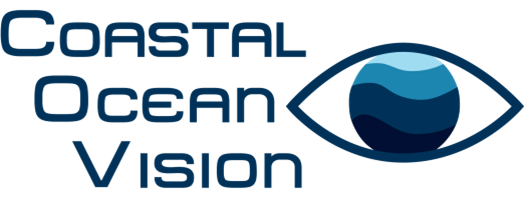CoastalOceanVision, Inc.

Address
10 Edgerton Drive
North Falmouth, MA 02556 United States
Point of Contact
Scott M. Gallager President
sgallager@coastaloceanvision.com 15084725520
Chat Schedule
Currently we offer the following products:
Continuous Plankton Imaging and Classification System (CPICS). CPICS is an autonomous dark-field microscope that images plankton and particles and stores Regions of Interest on an internal card. CTD or other serial data may be recorded simultaneously with the images to allow one for one association with environmental data. Applications include deployments on CTD rosettes, stand-alone buoys, static observing systems, profiling floats and autonomous surface or subsurface vehicles. Depth ratings are 1000 and 6000m and imaging Fields of View include 12x11 mm and 45x35 mm.
Deep Learning Classification Environment (DICE). DICE is a small box with an ARM processor and GPU cores that is designed to synchronize with CPICS over Ethernet to capture image data and other environmental data. Once data are synched, DICE provides a rich environment for viewing plankton images, building training sets, training and validating a Deep Convolutional Neural Network, running classifications on large datasets, viewing classification results and plotting time series or depth profiles of species-specific communities.
Habitat Mapping Camera (HabCam). HabCam is a towed benthic stereo imaging system mounted on a 4’ v-fin along with several environmental sensors including CPICS, CTD, turbidity, chlorophyll, PAR, etc. All images and data are to the ship on a fiber optic cable where processors use Deep Learning in real-time to classify benthic organisms and substrate type. Tow speed is 6 kts so over 100 nm can be surveyed per day.
Habitat Aware Reconnaissance and Imaging Module (HARIM). HARIM is a module mounted on the front of a REMUS-600 or similar AUV and has all of the sensors available on the towed HabCam. Stereo imaging at 3-4 kts allows for autonomously stitching sea floor mosaics and on-board processing for habitat characterization with dynamic sampling based on an information maximization model.
OceanCube Observing System. OceanCubes are either stationary or moored observing systems that accumulate, process and transmit data from up to 35 serial and 8 Ethernet devices including CPICS, side- looking stereo cameras, temperature strings, CTD, profiling platforms, and many other sensors. A fiber optic ground cable to a shore station provides unlimited power and bandwidth so high bandwidth experimental instruments may be easily deployed.
Harmful Algal Bloom Statistical Sampler (HABStats). HABStats is a Raman Imaging Flow Cytometer that combines high speed color imaging microscopy with Raman Spectroscopy to provide species classification and molecular information on HABs, including quantitative analysis of toxins in many cases. Single cells or colonies in marine or freshwater are analyzed at several hundred per second to provide a rich analysis of community composition and the presence of toxins. Real-time telemetry to a central sever makes it possible for this IoT instrument to form large networks in distributed arrays across ocean basins or lakes, reservoirs and ponds allowing rapid management decisions to be made. Depth rating is 10m. Underway, continuous flow systems on ships of opportunity allow mapping surface concentrations of HABs and other phytoplankton and zooplankton over coastal communities and the world ocean.
CoastalOceanVision's website
Description of current products and images of actual deployments.
View Resource
Characterization of the biological pump using CPICS
Each CPICS image undergoes machine vision techniques to extract size, shape, volume, circularity, perimeter, fractal index, and other parameters. The Deep Learning classifier can be trained to identify marine snow and the calculate the vertical and horizontal flux of carbon.
View Resource
Developing a Raman Spectrometer to classify HABs and their toxins
This talk was presented at the North East Shellfish Sanitation Authority meeting April 20, 2019 and chronicles the development of a Raman Imaging Cell Cytometer.
View Resource
Description of COV products
Using optics and AI to meet unmet needs in water quality assessment: toxic algae, microplastics and nuisance plankton
Who we are
Our vision
Our products
CPICS
HabCam Habitat mapping camera
HARIM and REMUS-600 AUV
OceanCube Observing Systems
HABStats - Raman Imaging Flow Cytometer
View Resource
Demonstration of Real-Time Classification of Plankton Images
Deep Learning classification of plankton shown on a DICE window
View Resource
HARIM benthic imaging on a REMUS 600
HARIM is a module that fits onto a REMUS-600 or similar AUV to image the seafloor from about 3m altitude. A down-looking stereo imaging system takes 6 image pairs per second with a field of view of about 1m2 while the vehicle travels at about 3-4 kts.
View Resource






Share